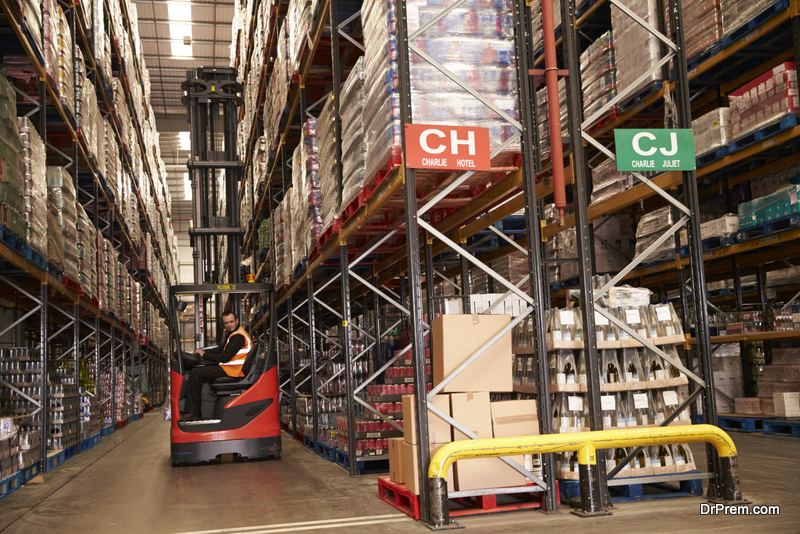Have you ever wondered how large companies that ship products near and far keep their warehouses in order? It’s a big job and when done right, consumers are happy. This is why quality control is such an important element in good warehouse operations. Without it, businesses can lose revenue and consumers would seek other products. In this article, we’ll explore how companies can ensure the quality of their products in a warehouse environment.
Products stored in a warehouse are usually there temporarily. However, the warehouses those products are stored in must be operating properly to avoid damage or spoilage to the products it stores. There are several ways that warehouse operations can be altered to improve efficiency. They include the following.
1. Regular Reviews

Taking a good, hard look at how the warehouse currently operates will show you whether or not it needs improvement. The flow of goods in and out of the facility should be smooth and delay-free. Any issue along the chain can develop into a problem if not caught in time to remedy. Even after you have made all the necessary tweaks, conduct reviews at regular intervals to track the changes and make corrections when needed. This will help improve efficiency.
2. Properly Train Staff
Managers and employees should receive the correct training for the job they are expected to do. This means teaching them to identify issues within warehouse operations and act on them as soon as possible. Arm your staff with the knowledge they need to tackle any problem and solve them without creating a great deal of downtime. With a well-trained staff, your warehouse operation will run smoothly and efficiently. Encourage communication between departments and feedback that assists the overall operation.
3. The Warehouse Layout

The warehouse’s layout has a huge impact on the efficiency of the operation in and around it. If you simply can’t fill orders because you can’t locate the products, there must be a change. Not only will a well-organized warehouse prevent this from happening, but it will also become a warehouse with fewer hazards. With changes in technology and equipment, always review the layout to ensure it continues to function smoothly and make changes when and where they are needed.
4. Maintain Proper Stock Levels
Inventory management is another place where a warehouse can lose efficiency. Without a proper system in place to track inventory in real-time, it is hard to know what you have and what you need to fill holes in inventory. Overstocking can result in thousands of dollars in unused or expired products going to waste. Seasonal increases make sense but guessing at what you need does not. The best way to prevent these issues is with electronic inventory tools.
5. Proper Temperature Control

If your warehouse stores sensitive assets, keeping temperatures consistent in that storage area can mean the difference between product loss and additional product storage. The most effective tool for this job is a data logger. It records, tracks, and monitors temperature levels and sends alerts, ideally before temperatures reach levels that could damage products.According to Dickson, properly calibrated data loggers are essential to the tracking of temperature data in a warehouse environment.
6. Make Use of Technology
Warehouse technology improves such things as inventory control and tracking of where that inventory is and where it is going. By implementing simple things such as bar codes,technology can assist with many different aspects of the warehouse environment. To improve efficiency in many different manners, technology provides the tools to collect data and give you a better picture of what is going on from floor to ceiling. Not using technology means your warehouse is behind the times and it will show it.
7. Add Incentive Programs

Hitting projections and setting records is one thing for your staff to do. But they must do these things with safety in mind. By adding incentive programs that include safety elements, you motivate the people running your warehouse and show them they have value to the company—they’re not just an employee number. Incentives celebrate success and if your staff is happy, they will become loyal and turnover will be reduced. Happy employees work harder as well.
8. Forecast in Advance
There are seasonal changes that you should be able to account for and plan for in advance. Depending on the types of products that get stored in your warehouse, you may need to plan for Christmas, Spring, Summer, and Fall. Use proper planning techniques, and you’ll never run out of space and will never be caught off guard with a sudden increase in volume. By being prepared for these inevitable situations, your warehouse will run effectively all year round.
9. Think About the Big Picture

The time products spend in a warehouse is a small part of the timeline they have. From the manufacturing to storage to distribution, products change hands and move from one environment to another before they end up on store shelves. That is why it is important to focus on the storage phase in your warehouse as an important step along that supply chain. Your warehouse plays an important role in getting these products into the hands of consumers.
Conclusion
Quality control is essential in so many parts of our daily lives. The products we use at home or work are effective because of quality control. But before those products enter the consumer marketplace, they sit for a period in a warehouse somewhere, waiting to be shipped to distributors. The conditions within that warehouse can impact the quality of the products. With proper tools in place to make the warehouse run efficiently, products enter the marketplace in the best of condition.
Article Submitted By Community Writer




